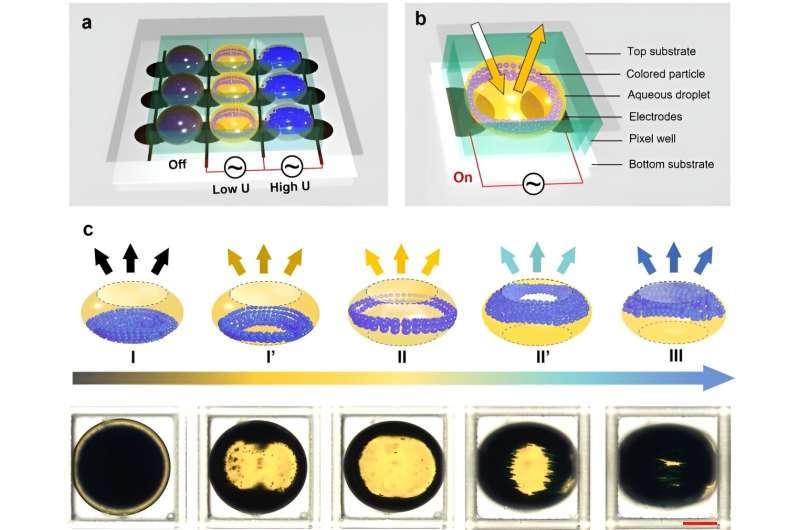With the advent of the IoT, there is increased need to display large amounts of information to people quickly and without distortion in all types of lighting conditions. Though transmissive and emissive displays such as LEDs and OLEDs are widely used, reflective displays are more capable of providing comfortable readability and clear vision in outdoor strong-light environments with low energy consumption. Examples of commercially available reflective displays include electrophoretic displays (EPDs), interferometric modulator displays, electrowetting displays, cholesteric liquid crystal displays, and photonic crystal displays.
According to researchers led by the International Joint Laboratory of Optofluidic Technology and System at South China Normal University, EPDs are among the most effective reflective displays. These displays are widely applied for electronic paper devices like e-readers and e-labels. However, the switching time for multicolor EPDs takes far too long in certain settings, increasing response time and, potentially, fabrication cost. This in turn restricts their application in scenarios requiring a fast response to achieve a favorable interactive experience.
As an improvement, the researchers developed a reflective display fabrication technique that yielded a display with the desired qualities — fast switching speed, color, bistability, and viewing angle — that commonly fall short in current reflective display technologies in such strong-light environments. The approach is based on the previously demonstrated electro-microfluidic assembly of particles (eMAP) strategy.
According to the researchers, their amended eMap strategy adopts a similar fabrication approach as EPDs and other reflective displays, while using faster color switching. Specifically, the nature of the motion of the particles in their fabrication method ultimately differentiate the approach from EPDs.
The team called its result the eMAP display (eMAPD). Though it is still in its early stages, the researchers believe that the proposed eMAPD offers a wide range of advantages over existing reflective displays. The display designed information in three primary colors with a viewing angle ≥ 170°, ~0.14 s switching time, and bistability with an optimized material system. It also achieved fast particle assembly at low voltage.
In the research, colored particles suspended in a water-in-oil droplet assemble into multiple structures, resulting in reversible pixel switching performance in a controllable manner. The colored particles can be driven to slide along the curved water-oil interface to assemble at the bottom or top area to form a planar structure, and around the equator to form an annular structure in a continuous way, generating closing and opening states and showing multiple blended colors.

(a): A 3D schematic of the eMAPD working principle. (b): A schematic of the detailed device structures and materials of a pixel. (c): Drawings (top row) and experimental photographs (bottom row) of the representative states of a display pixel. States I, II, and III denote the three main states of the particle distribution in a water droplet sitting on the floor, surrounding at the equator, and floating on the ceiling. States I′ and II′ correspond to the representative intermediate transition states from states I to II and from states II to III, respectively. Courtesy of Light: Science & Applications.
eMAPD displays multiple colors by driving one group of single-color particles into various assembled structures within a dyed droplet. This enables operation in two distinct ways, the researchers said: light reflection mode and light transmission mode.
They added that such a light transmission state is difficult to achieve with conventional electrophoretic e-paper technology, where the particles assemble at the equator of the droplet, allowing light to pass through the droplet. The researchers said that their solution provides a combination of reflective and transmissive options for color regulation of e-paper, enhancing the expandability of display colors.
The research was published in Light: Science & Applications (www.doi.org/10.1038/s41377-023-01333-w).